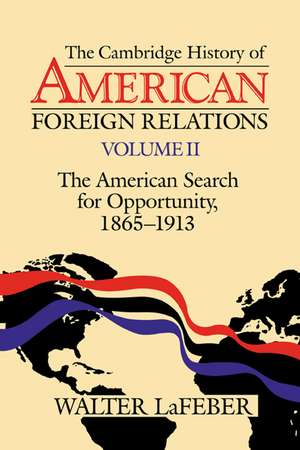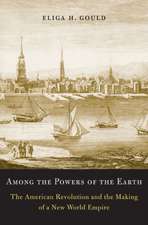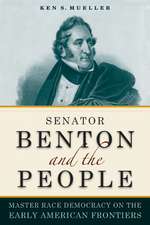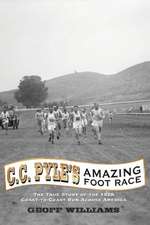The Cambridge History of American Foreign Relations: Volume 2, The American Search for Opportunity, 1865–1913
Autor Walter LaFeberen Limba Engleză Paperback – 27 apr 1995
Preț: 309.52 lei
Nou
59.23€ • 61.99$ • 49.30£
Carte tipărită la comandă
Livrare economică 31 martie-14 aprilie
Specificații
ISBN-10: 0521483832
Pagini: 284
Dimensiuni: 152 x 228 x 20 mm
Greutate: 0.4 kg
Ediția:00002
Editura: Cambridge University Press
Colecția Cambridge University Press
Locul publicării:New York, United States
Cuprins
General editor's introduction; Preface; 1. Springboards and strategies; 2. The Second Industrial Revolution at home and abroad; 3. Race for empire; 4. 'America will take this continent in hand alone'; 5. Crossing the oceans; 6. 1893–1896: Chaos and crises; 7. The empire of 1898 - and upheaval; 8. Pacific empire - and upheaval; 9. Theodore Roosevelt: conservative as revolutionary; 10. William Howard taft and the age of revolution; Conclusion: the 1865–1913 era restated; Bibliographic essay; Index; Maps.
Recenzii
'The four volumes in this new offering from Cambridge University Press provide a magisterial overview of American diplomatic history from the Revolution to 1991. The four authors are all recognised experts in the periods they cover. These volumes are much more than surveys; each author shares with the reader his interpretation of the larger historical scholarship for years to come.' Library Journal
Descriere
Between the American Civil War and the outbreak of world War I, global history was transformed by two events: the United States's rise to the status of a great world power (indeed, the world's greatest economic power) and the eruption of nineteenth- and twentieth-century revolutions in Mexico, China, Russia, Cuba, the Philippines, Hawaii, Panama, Nicaragua, and elsewhere. The American Search for Opportunity traces the U.S. foreign policy between 1865 and 1913, linking these two historic trends by noting how the United States - usually thought of as antirevolutionary and embarked on a 'search for order' during this era - actually was a determinative force in helping to trigger these revolutions. Walter LaFeber argues that industrialization fuelled centralisation: Post-Civil War America remained a vast, unwieldy country of isolated, parochial communities, but the federal government and a new corporate capitalism now had the power to invade these areas and integrate them into an industrialization, railway-linked nation-state. The furious pace of economic growth in America attracted refugees from all parts of the world. Professor LaFeber describes and influx of immigration so enormous that it led to America's first exclusionary immigration act. In 1882, the United States passed legislation preventing all Chinese immigrant labour, skilled and unskilled, from entering the country for the next 10 years.













